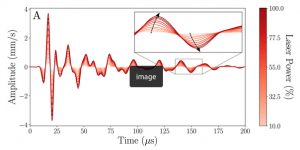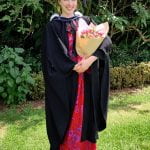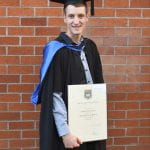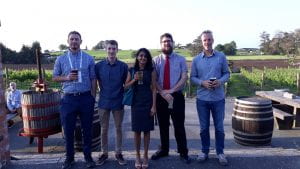Tsunamis can be generated by earthquakes near subduction zones. Here, the white gutter represents one tectonic plate with water — an ocean — on top. The wooden board is a plate subducting under the “gutter plate.” Friction between the two plates, pulls the gutter down until the friction is overcome by the strength of the gutter. At that point, the gutter plate rebounds, throwing water up. This is the start of our wave, as you can see in the video:
In the video below, you see a wave travel from one side to the other in shallow water in a 30-cm square baking tray that is only a few centimeters high.
For our lab in ENVPHYS100, you can answer some of the following questions:
– What is the wave speed?
– What is your estimate of the wavelength?
– If the wavelength is much less than the water depth, then the wave speed equals the square root of the product of gravity and water depth. Can you estimate the water depth in the tray?
1. Now, break out your own baking tray, and collect data to test the shallow water wave equation v \approx \sqrt{g h} (format!)
2. Considering the full water wave speed equation with a deep and a shallow water term. Discuss this in terms of Tsunami. For example, what happens to the Tsunami wave
as it approaches the coast?
3. In the previous you focused on the wave speed of a tsunami. If you now remember Mila’s lecture on conservation of energy, discuss the wave height of a Tsunami from deep in the ocean to the coast.
4. Joining (changes in) wave speed and height, draw me your best Tsunami, as it makes landfall.





